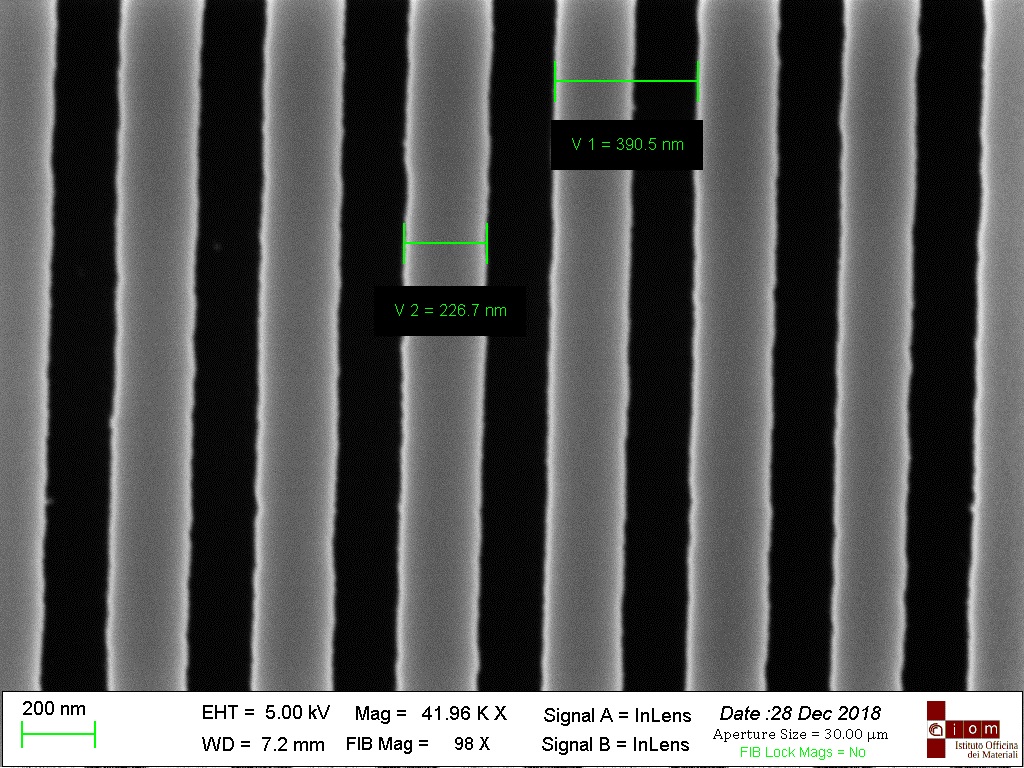Ultra Violet - Interference lithography
Lithography & Patterning (Photon-based lithography)
UV-IL is a lithographic technique capable of producing high quality and reproducible periodic patterns. Light from a solid state laser is used with a wavelength in the ultraviolet range. The ilterference lithography system is mounted on an optical bench to reduce vibrations. The beam is deviated by two mirrors and redirected to a spatial filter that selectrs the central part of the Gaussian beam and reduces the beam diameter. The spatial filter is composed of a focusing lens and a pinhole with 5 or 10 μm diameter and forms a beam with Gaussian intensity profile. The beam is collimated by a 2” lens on the sample holder. A goniometer allows to adjust the incidence angle on the sample holder and the mirror with a micrometric screw. There is a gap of a few millimeters between the mirror and the sample, so patterning is contactless. The typical power incident to the sample is 10-20 μW/cm2. The range of achievable pitch of the gratings can range between 200 to 2500 nm. The area of the sample that can be exposed is limited by the size of the mirror (4”) and the incidence angle. The maximum exposure area is limited to 1” x 1”. The sample holder includes a second goniometer allowing multiple exposures to obtain dots arrays.



